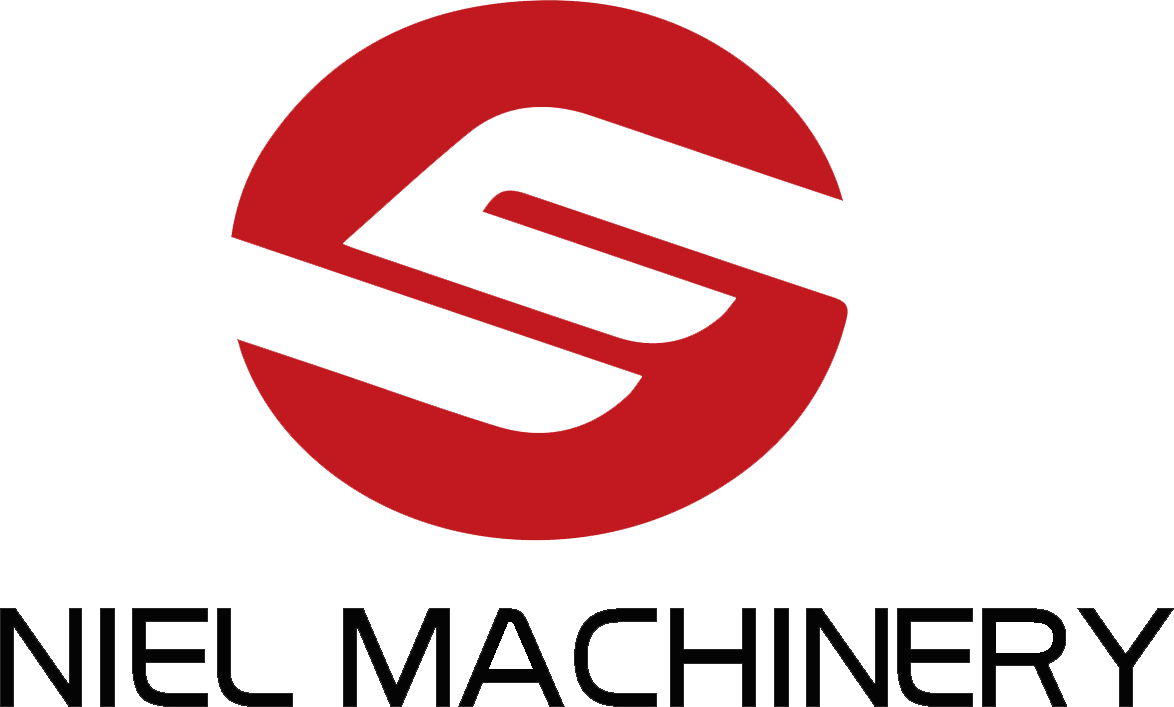Enhancing Batch Consistency: Industrial Ribbon Mixer Technology Explained
Release time:
2025-04-04 10:00
Source:
Enhancing Batch Consistency: Industrial Ribbon Mixer Technology Explained
Table of Contents
- 1. Introduction to Industrial Ribbon Mixers
- 2. Understanding Ribbon Mixer Technology
- 3. Advantages of Using Ribbon Mixers
- 4. Design and Components of Ribbon Mixers
- 5. Applications of Ribbon Mixers in Various Industries
- 6. Best Practices for Using Ribbon Mixers
- 7. Troubleshooting Common Issues with Ribbon Mixers
- 8. The Future of Ribbon Mixer Technology
- 9. Conclusion
- FAQs
1. Introduction to Industrial Ribbon Mixers
In the realm of manufacturing, consistency is king. Maintaining uniformity in batch production can significantly impact product quality and operational efficiency. This is where **industrial ribbon mixers** come into play, offering a robust solution for many industries requiring precise mixing of powders and granules. This article aims to explore the intricacies of ribbon mixer technology, elucidating its benefits, applications, and best practices to enhance batch consistency.
2. Understanding Ribbon Mixer Technology
**Ribbon mixers** are designed to blend dry ingredients efficiently. They feature a unique design consisting of a helical ribbon that moves material in both a circular and linear motion. This dual movement ensures that all components of the batch are thoroughly mixed, reducing the risk of segregation and enhancing consistency.
The **mixing mechanism** primarily relies on the ribbon's configuration and the rotational speed. The ribbons can be designed in various configurations—single or double ribbons—depending on the desired mixing efficiency and batch size.
2.1 How Ribbon Mixers Work
The operation of a ribbon mixer starts with loading the materials into the trough. As the ribbons rotate, the materials are pushed toward the center and then moved outward, allowing for uniform distribution and blending. This process can significantly enhance batch consistency by ensuring that every particle in the mix is treated identically.
3. Advantages of Using Ribbon Mixers
Ribbon mixers offer a plethora of benefits in industrial settings:
3.1 Enhanced Batch Consistency
With their efficient mixing capabilities, ribbon mixers ensure that every batch achieves the desired uniformity. This consistent quality reduces the likelihood of product variations, which can be critical in industries such as food processing, pharmaceuticals, and chemicals.
3.2 Versatility
Ribbon mixers are adaptable and can handle a wide range of materials, from dry powders to granulated substances. This versatility makes them an excellent choice for manufacturers dealing with diverse product lines.
3.3 Reduced Mixing Time
The design of the ribbon mixer allows for faster mixing cycles compared to traditional mixing methods. This efficiency can lead to shorter production times and increased output, ultimately benefiting the bottom line.
3.4 Easy Maintenance
Many ribbon mixers are designed with accessibility in mind, making routine maintenance more straightforward. This design consideration ensures that manufacturers can keep their equipment running smoothly, minimizing downtime.
4. Design and Components of Ribbon Mixers
Understanding the design elements of ribbon mixers is crucial for optimizing their performance. Key components include:
4.1 Trough
The trough is the primary body of the mixer, designed to hold the materials during the mixing process. It is usually built from stainless steel or other durable materials to withstand wear and tear.
4.2 Ribbons
The helical ribbons are the heart of the mixer. They can be designed for various applications, with specific pitches and diameters tailored to the mixing requirements.
4.2.1 Single vs. Double Ribbons
Single ribbon mixers are suitable for smaller batches, while double ribbon mixers provide greater mixing efficiency for larger volumes.
4.3 Drive Mechanism
The drive mechanism powers the ribbons and controls their rotation speed. Advanced models may include variable speed drives to allow for greater control over the mixing process.
5. Applications of Ribbon Mixers in Various Industries
Ribbon mixers are utilized in a diverse array of sectors, including:
5.1 Food Industry
In the food industry, ribbon mixers play a crucial role in ensuring that ingredients such as spices, flour, and other powders are blended uniformly, enhancing flavor consistency in products like baked goods and snack foods.
5.2 Pharmaceutical Industry
Pharmaceutical manufacturers rely on ribbon mixers to ensure uniformity in drug formulations. Consistent mixing is vital for dosage accuracy and product efficacy.
5.3 Chemical Industry
In the chemical sector, ribbon mixers are used to blend additives, pigments, and other materials, ensuring that the final products meet stringent quality standards.
5.4 Construction Industry
The construction industry utilizes ribbon mixers to combine materials such as cement and sand, ensuring that the concrete produced is homogenous and meets required specifications.
6. Best Practices for Using Ribbon Mixers
To maximize the effectiveness of ribbon mixers, consider the following best practices:
6.1 Proper Loading Techniques
Ensure the mixer is loaded according to the manufacturer's specifications to prevent overloading and maintain optimal mixing efficiency.
6.2 Regular Maintenance Checks
Conduct regular maintenance checks on all components, including the ribbons and drive mechanisms. Regular inspections can help identify wear and tear early, preventing costly breakdowns.
6.3 Monitoring Mixing Times
Optimize mixing times according to the material properties and desired outcomes. Different materials may require varying mixing durations for optimal results.
6.4 Training Operators
Invest in comprehensive training for operators on the proper use and maintenance of ribbon mixers. Well-trained staff can help achieve better outcomes and reduce the likelihood of operational errors.
7. Troubleshooting Common Issues with Ribbon Mixers
Despite their reliability, issues can arise with ribbon mixers. Here are some common problems and their solutions:
7.1 Poor Mixing Results
If batches are not mixing well, check for correct loading procedures and ensure that materials are not too wet or too dry.
7.2 Excessive Wear
Frequent wear of components may indicate the need for material upgrades or adjustments in mixing speed. Regular maintenance can also extend the lifespan of the equipment.
7.3 Overheating
If the mixer overheats, inspect the drive system and consider reducing the mixing load or speed to alleviate strain on the motor.
8. The Future of Ribbon Mixer Technology
As industries evolve, so too does the technology behind ribbon mixers. Future advancements may include:
8.1 Smart Mixing Solutions
Integration of IoT technology for real-time monitoring and data analysis could allow for enhanced control over mixing processes, leading to improved batch consistency.
8.2 Sustainable Materials
The development of eco-friendly materials for mixer construction will be crucial as industries seek to reduce their environmental footprint.
8.3 Automation in Mixing Processes
Increasing automation in manufacturing processes will streamline operations, potentially enhancing the efficiency and precision of ribbon mixers.
9. Conclusion
Enhancing batch consistency is vital for manufacturers in various industries. Industrial ribbon mixers provide a powerful solution, ensuring that materials are blended uniformly and efficiently. By understanding the technology, advantages, design, applications, and best practices, manufacturers can leverage ribbon mixers to improve their production processes. As technology continues to advance, the future of ribbon mixer technology promises even greater efficiencies and capabilities, positioning these machines as essential assets in any manufacturing operation.
FAQs
1. What materials can be mixed using ribbon mixers?
Ribbon mixers can handle a wide variety of materials, including powders, granules, and dry ingredients commonly used in food, pharmaceuticals, chemicals, and construction.
2. How do I determine the right size of a ribbon mixer for my needs?
The right size depends on your batch requirements and the material being mixed. Consult with manufacturers to assess the optimal capacity for your operations.
3. What maintenance is required for ribbon mixers?
Regular maintenance includes cleaning, inspecting components for wear, and ensuring proper lubrication of moving parts to extend the lifespan of the equipment.
4. Can ribbon mixers be customized?
Yes, many manufacturers offer customizable options for ribbon mixers to suit specific operational needs, including varying ribbon configurations and materials.
5. How do I troubleshoot poor mixing performance?
Evaluate loading procedures, check material moisture content, and inspect the mixer for mechanical issues. Adjusting mixing times and speeds may also help improve performance.
Related News
Boosting Efficiency: Semi Automatic Powder Filling Machine in Action
Boosting Efficiency: Semi Automatic Powder Filling Machine in Action Table of Contents 1. Introduction to Semi Automatic Powder Filling Machines 2. What is a Semi Automatic Powder Filling Machine? 3. How Does a Semi Automatic Powder Filling Machine Work? 4. Benefits of Semi Automatic Powder Filling Machines 5. Applications of Semi Automatic Powder Filling Machines 6. Maint
Understanding Semi-Automatic Powder Filling Machines: A Comprehensive Overview
Semi-automatic powder filling machines are pivotal in the packaging sector, particularly for businesses handling powdered products such as spices, flour, chemicals, and pharmaceuticals. These machines bridge the gap between manual filling methods and fully automatic systems, offering businesses an optimal solution for efficiency and precision. One of the primary advantages of semi-automatic powder
The Evolution of Mixing Machinery: Horizontal Paddle Mixers at the Forefront
The Evolution of Mixing Machinery: Horizontal Paddle Mixers at the Forefront Table of Contents 1. Introduction to Mixing Machinery 2. A Brief History of Mixing Machinery 3. Technological Advancements in Mixing Machinery 4. Understanding Horizontal Paddle Mixers 5. Applications of Horizontal Paddle Mixers 6. Advantages of Horizontal Paddle Mixers 7. The Future of Mixing Machinery 8
The Essential Guide to Horizontal Paddle Mixers: Applications and Benefits
Horizontal paddle mixers are vital components in various manufacturing and processing operations, particularly within the realm of mixing machinery. Understanding the workings and benefits of these mixers can significantly enhance operational efficiency and product quality. A horizontal paddle mixer typically features a cylindrical mixing chamber equipped with paddles that rotate on a horizontal a
Exploring the Dynamic Capabilities of Industrial Ribbon Mixers Table of Contents Introduction to Industrial Ribbon Mixers Understanding the Mechanics of Ribbon Mixers Advantages of Using Ribbon Mixers in Manufacturing Applications of Ribbon Mixers Across Industries Maintaining Your Ribbon Mixer for Longevity Future Trends in Ribbon Mixer Technology Case Studies: Ribbon Mixers in Act
Understanding Industrial Ribbon Mixers: Essential Tools for Effective Material Blending
Industrial ribbon mixers are vital pieces of equipment used in various manufacturing processes, particularly in the blending of powdered and granular materials. These mixers are characterized by their unique design, featuring a set of helical ribbons that move materials through the mixing chamber, ensuring a thorough and uniform blend. With increasing demands for consistency and quality in product




















